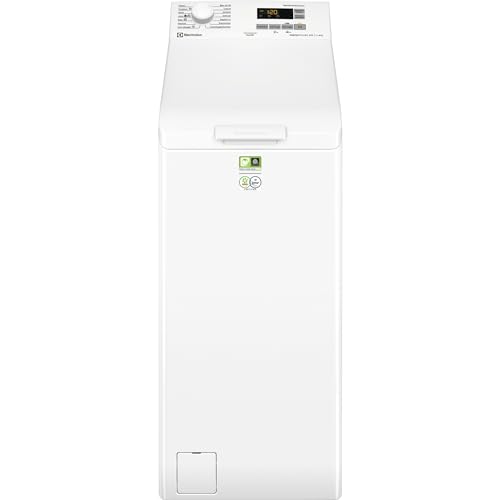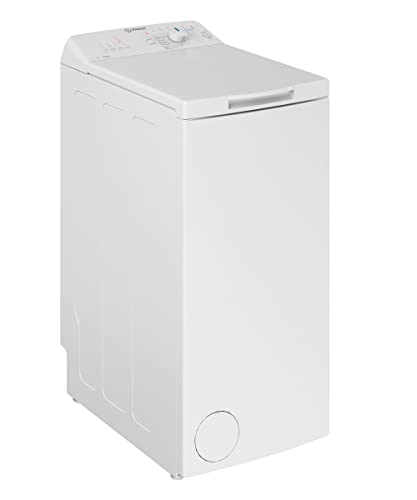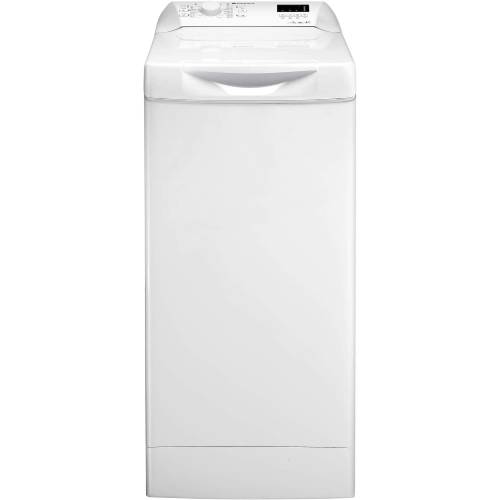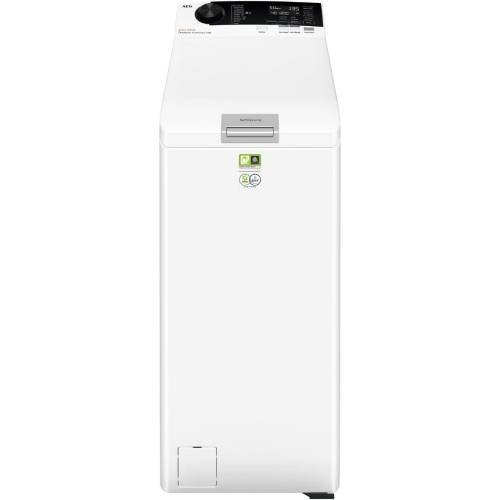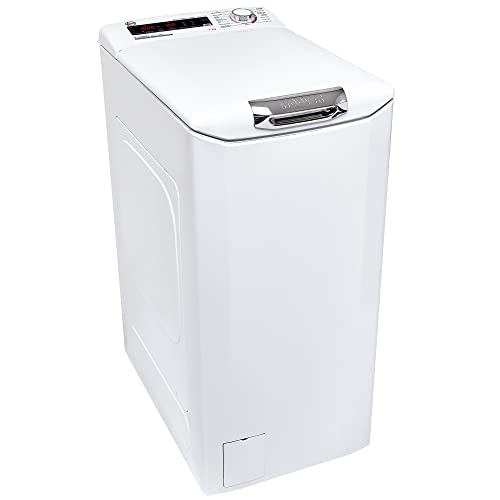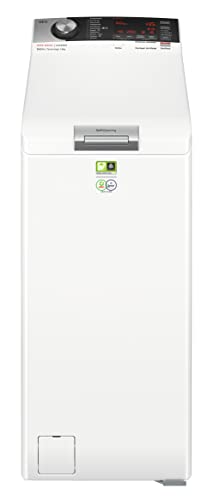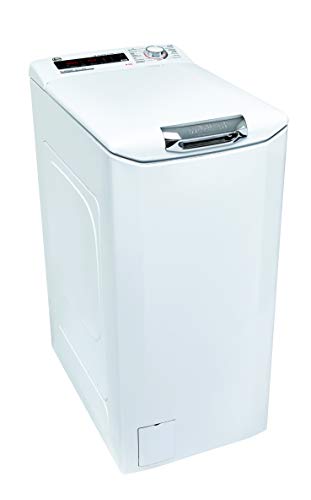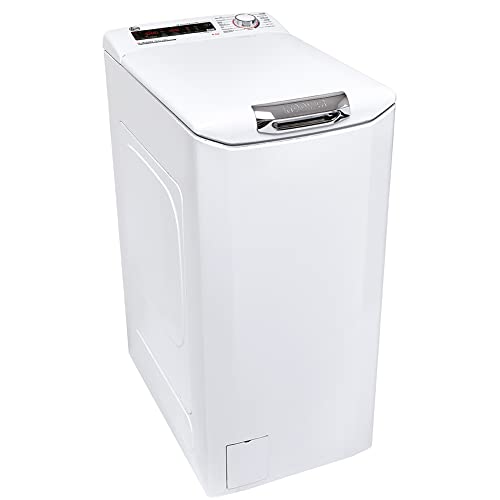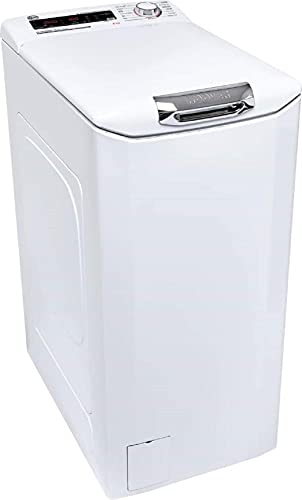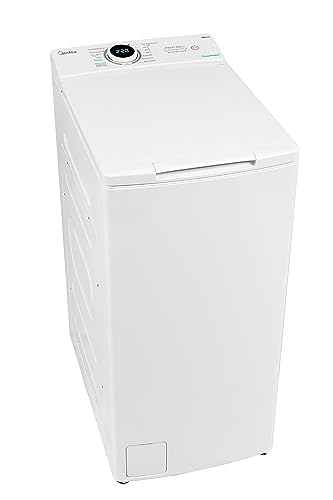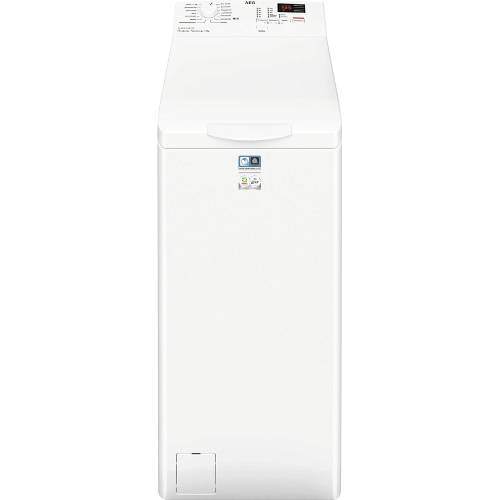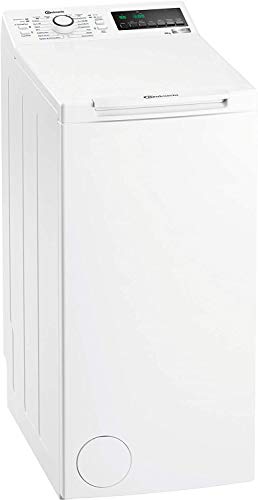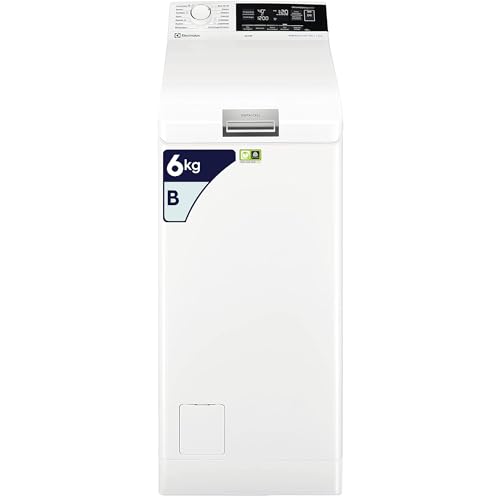Are top-loading washing machines better than front-loading ones?
Top-loading washing machines score lower than front-loading models (Overall score 6.1 versus 7.1) and have fewer overall advantages. If you’re looking for the best washing machines, opt for front-loading models instead.
What are the main advantages of top-loading washing machines compared to front-loading ones?
Top-loading washing machines offer the following advantages over front-loading models.
- Smaller footprint: top-loading washing machines take up approximately 25% less space than front-loading models (0.21 m³ versus 0.28 m³).
- Affordable price: top-loading washing machines are not expensive and cost around £70 less than front-loading machines (£340 versus £410).
- Narrower width: all top-loading washing machines are approximately 40 cm wide, compared to 60 cm for front-loading models.
- Lower water consumption: on average, top-loading washing machines use 4 litres less water than front-loading models (43 L versus 47 L).
- Greater flexibility at low spin speeds: 87% of top-loading washing machines can reach a minimum spin speed of 400 RPM, compared to 64% of front-loading models.
- Shorter ECO cycle: the ECO cycle in top-loading washing machines is on average 13 minutes shorter than in front-loading models (205 minutes versus 218 minutes).
- Specialized cycles: top-loading washing machines often include specialized cycles such as Prewash, Stain Removal, Jeans, Anti-Allergy, Hygiene, and Outdoor/Sport.
More washing functions: many top-loading machines come with features like anti-crease, rinse hold, stain removal, extra rinse, prewash, or quick wash.
- Advanced features: most top-loading washing machines incorporate systems like foam control, unbalanced load detection, laundry detection (e.g., Electrolux SensiCare, Whirlpool 6th Sense, AEG ProSense), and soft-opening doors. Many also include AquaStop systems, load balancing, memory functions, smart diagnosis, and pre-mix technology.
- Automatic systems: some advanced top-loading models feature automatic drum positioning and detergent dosing systems.
What are the main disadvantages of top-load washing machines compared to front-loading ones?
Top-loading washing machines have the following disadvantages compared to front-loading models.
- No slim models: top-load washing machines always have a depth of around 60 cm.
- Limited capacity: no top-loading washing machine has a capacity of 9 kg or more.
- Smaller drum volume: top-loading washing machines have an average drum volume of 42 L, 17 L less than the average of 59 L for front-loading machines.
- Poorer energy efficiency: no top-loading washing machine belongs to energy efficiency class A, and only 19% are class B, compared to 44% of front-loading machines in class A and 17% in class B.
- Higher energy consumption: top-load washing machines consume approximately 18% more energy than front-loading models (65.5 kWh versus 55 kWh per 100 cycles).
- Lower spin efficiency: no top-loading washing machine has a spin-drying efficiency class A, and only 70% are class B, compared to 5% of front-loading models in class A and 86% in class B.
- Lower spin speeds: 58% of top-load washing machines reach a maximum spin speed of only 1200 RPM, whereas 66% of front-loading models reach 1400 RPM.
- Higher noise levels: top-loading washing machines emit an average of 78 dB during spinning and 60 dB during washing, compared to 74 dB and 53 dB for front-loading machines.
- Some specialized programs often missing: top-loading washing machines typically lack options like Steam, Shirts, Baby Care, or Duvet cycles, which are common in front-loading models.
- Fewer inverter motors: only 38% of top-loading washing machines feature an inverter motor, compared to 79% of front-loading models.
- Limited advanced features: only 17% of top-loading machines include steam technology, and only 6% offer Wi-Fi connectivity, compared to 63% and 26% of front-loading machines, respectively.
- No AI technology: top-load washing machines do not include AI, whereas 13% of front-loading models feature this technology.
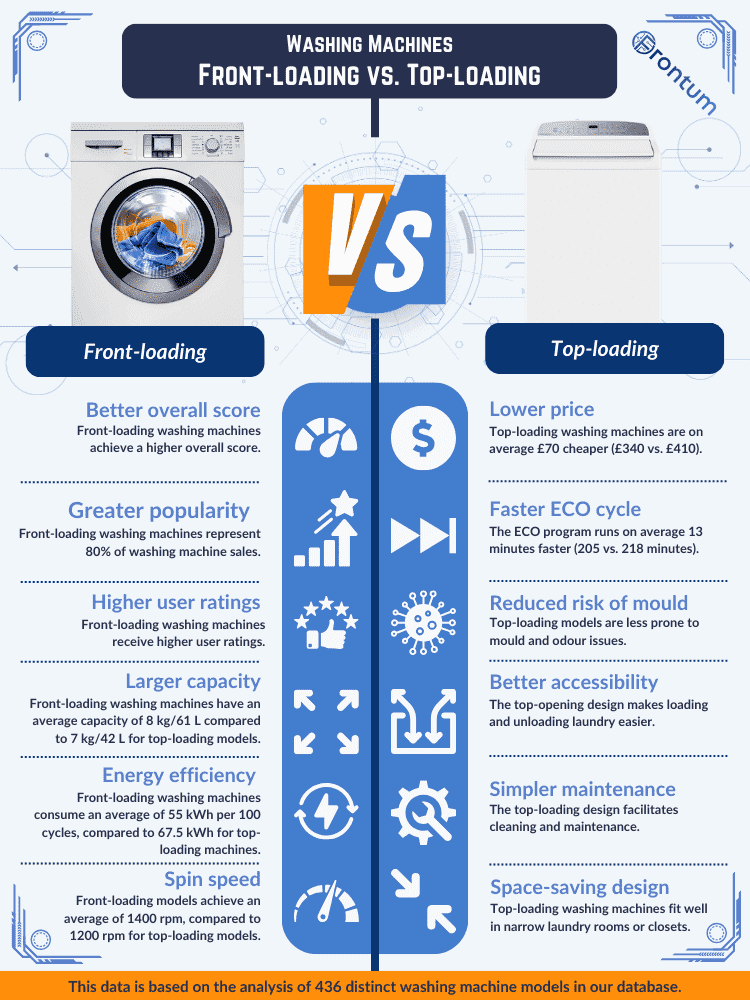
How much do top-load washing machines cost?
Top-loading washing machines cost between £250 and £600, with an average price of £350. They are about £50 cheaper than front-loading models.
The price distribution of top-loading washing machines is shown in the chart below.
[vertical-chart-86468241]
Top-loading washing machines have a ratio quality/price of 6.7 points, similar to that of front-loading models.
The following brands offer the most affordable top-load washing machines.
- Indesit (Average price: £300)
- Candy (Average price: £330)
- Midea (Average price: £330)
The most expensive brands for top-loading washing machines are as follows.
- AEG (Average price: £610)
- Electrolux (Average price: £490)
- Whirlpool (Average price: £450)
The chart below ranks top-loading washing machine brands by price.
[horizontal-chart-15813981]
Which brands produce the best top-loading washing machines?
The brands that produce the best top-loading washing machines (with the highest overall score) are as follows.
- Hoover (Average overall score: 7.1 points)
- Midea (Average overall score: 6.4 points)
- Electrolux (Average overall score: 6.4 points)
The brands that produce the worst top-loading washing machines (with the lowest overall score) are as follows.
- Indesit (Average overall score: 5.5 points)
- Candy (Average overall score: 5.7 points)
- Whirlpool (Average overall score: 5.8 points)
The following chart ranks top-loading washing machine brands by overall score.
[horizontal-chart-90869534]
The following top-loading washing machine brands offer the best ratio quality/price.
- Midea (Average ratio quality/price: 7.3 points)
- Indesit (Average ratio quality/price: 6.9 points)
- Bauknecht (Average ratio quality/price: 6.9 points)
Which top-load washing machine brands have the highest user ratings?
The top-loading washing machine brands with the highest user ratings are as follows.
- Bauknecht (Average user rating: 8.2 points)
- AEG (Average user rating: 8.2 points)
- Electrolux (Average user rating: 8.1 points)
The chart below ranks top-loading washing machine brands by user ratings.
[horizontal-chart-20178813]
What should you consider when choosing the best top-loading washing machine?
When choosing the best top-loading washing machine, consider capacity, dimensions, energy consumption per 100 cycles, water consumption per cycle, spin efficiency, noise levels during washing, motor type, and available washing programs.
What are the available capacities for top-loading washing machines?
Top-loading washing machines have a capacity range between 5 and 8 kg. The most common capacity is 6 kg (38%), followed by 7 kg (32%) and 8 kg (20%). In comparison, front-loading washing machines generally have a larger capacity. The most common capacity in front-loading models is 9 kg (27%), followed by 8 kg (28%) and 7 kg (16%).
The capacity distribution among top-loading washing machines is shown below.
[pie-chart-28524668]
The drum volume in top-loading washing machines ranges from 40 to 50 litres, with an average of 42 litres. This is approximately 17 litres less than the average drum volume of front-loading washing machines (59 litres).
How much space do top-load washing machines take up?
Top-load washing machines occupy about 0.21 m³ of space, which is approximately 25% less than the space taken up by front-loading machines (0.28 m³).
Top-load models usually have a height ranging from 80 to 85 cm and a width of approximately 40 cm, while the depth remains constant at about 60 cm across all models. Due to this depth, slim washing machines are not available as top-loading models. If you are looking for a slim option, consider front-loading models.
The image below shows how much space, for example, the Electrolux PerfectCare 600 washing machine occupies.
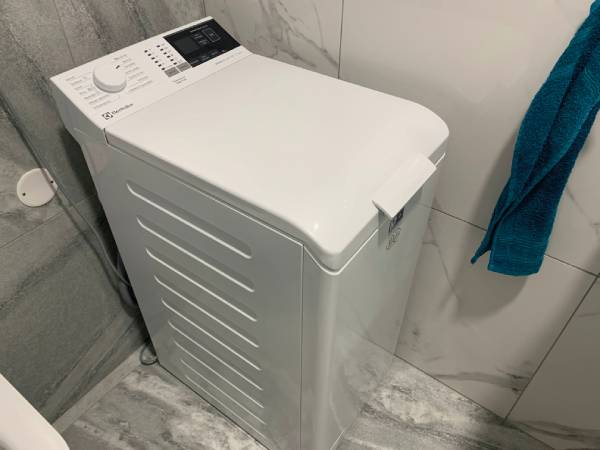
How much energy do top-loading washing machines consume?
Top-load washing machines consume between 50 and 90 kWh per 100 cycles. On average, they consume about 18% more energy than front-loading models (66 kWh vs. 55 kWh per 100 cycles). They typically belong to energy classes ranging from B to G, with F and C being the most common.
The distribution of energy classes for top-load washing machines is as follows.
- Class A: 0%
- Class B: 20%
- Class C: 21%
- Class D: 14%
- Class E: 14%
- Class F: 25%
- Class G: 2%
[pie-chart-25563595]
In comparison, 44% of front-loading washing machines are Class A, while 17% belong to Class B.
Class A washing machines usually consume less than 49 kWh per 100 cycles, while Class B models consume less than 55 kWh. However, these values can slightly vary depending on the capacity.
Energy class and consumption are decisive factors when choosing a washing machine, as they directly affect electricity usage and costs. Washing machines in higher energy classes (A and B) consume less energy per cycle, potentially saving you money in the long run, especially if you use your washing machine frequently.
The top-loading washing machines with the lowest energy consumption are as follows.
- Electrolux EW6T526C SensiCare 600 (Energy consumption: 56 kWh/100 cycles per 100 cycles)
- Indesit BTW L50300 (Energy consumption: 60 kWh/100 cycles per 100 cycles)
The following brands of top-loading washing machines are the most energy-efficient.
- Hoover (Average energy consumption: 55 kWh/100 cycles per 100 cycles)
- Bauknecht (Average energy consumption: 57 kWh/100 cycles per 100 cycles)
- Indesit (Average energy consumption: 58 kWh/100 cycles per 100 cycles)
The least energy-efficient top-loading washing machine brands are as follows.
- Candy (Average energy consumption: 86 kWh/100 cycles per 100 cycles)
- Whirlpool (Average energy consumption: 67 kWh/100 cycles per 100 cycles)
- AEG (Average energy consumption: 65 kWh/100 cycles per 100 cycles)
How much water do top-load washing machines consume?
Top-loading washing machines use between 40 and 48 litres of water per cycle, with an average of 43 litres (4 litres less than the 47 litres used by front-loading machines). This reduced water consumption is due to their smaller capacity and drum volume.
Even when comparing washing machines with the same capacity, top-loading models use less water. For example, a 7 kg top-loading washing machine consumes about 42 litres per cycle, while a 7 kg front-loading washing machine consumes around 45 litres.
The distribution of water consumption among top-loading washing machines is illustrated in the chart below.
[vertical-chart-94490973]
The top-loading washing machine brands with the lowest average water consumption are as follows.
- Electrolux (Average water usage: 41 L litres)
- AEG (Average water usage: 42 L litres)
- Candy (Average water usage: 42 L litres)
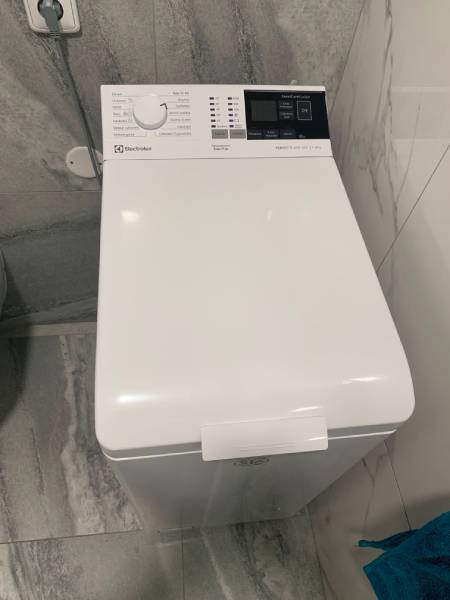
What is the spin efficiency of top-loading washing machines?
Top-load washing machines generally achieve lower spin efficiency compared to front-loading models. These machines typically fall into spin efficiency Class B (70%) or Class C (30%), while no top-loading model reaches Class A.
In contrast, 5% of front-loading washing machines reach Class A, 86% fall into Class B, and 8% into Class C. The spin efficiency class ranges from A to D, where A represents the highest water extraction capability.
The following chart shows the distribution of spin efficiency classes for top-loading washing machines.
[pie-chart-11038693]
Spin efficiency closely depends on the maximum spin speed. Top-loading machines generally have lower maximum speeds, ranging from 1000 to 1500 rpm. The most common speed is 1200 rpm (59%), followed by 1400 rpm (14%).
If you frequently wash delicate items, consider the minimum spin speed as well. Lower speeds are ideal for fabrics such as wool. In top-loading washing machines, the minimum spin speed ranges from 400 to 800 rpm, with 87% capable of reaching 400 rpm. In contrast, only 64% of front-loading washing machines allow for such low speeds, making top-loading models particularly suitable for washing delicate fabrics.
How noisy are top-loading washing machines?
Top-loading washing machines generate spin noise levels ranging from 75 dB to 81 dB, with an average of 78 dB. This is about 3 dB higher than front-loading models, which average 75 dB during the same phase. Spin cycles are the loudest part of the washing process, so noise level during this phase is an important consideration.
The noise levels during spin cycles among top-loading washing machines are shown in the following chart.
[vertical-chart-75284709]
Top-loading washing machines fall into noise emission classes ranging from B to D. Most (71%) belong to Class C (77-80 dB), followed by Class B (23%) and Class D (5%). By contrast, front-loading washing machines tend to be quieter: 41% are in Class A (below 73 dB), 36% in Class B, 20% in Class C, and only 3% in Class D.
During washing, top-loading washing machines produce noise levels between 52 and 62 dB, with an average of 60 dB (higher than the 53 dB average for front-loading machines).
The quietest top-loading washing machine brands are as follows.
- Bauknecht (Average spin noise level: 76 dB)
- AEG (Average spin noise level: 77 dB)
- Indesit (Average spin noise level: 78 dB)
How many washing programs and functions do top-loading washing machines have?
Top-load washing machines typically have between 13 and 16 washing programs, including 1-3 quick cycles lasting less than an hour (a number similar to front-loading models). They share many of the most common programs, such as Eco 40-60, Cotton, Synthetics, Mixed, Wool, Quick, Rinse and Spin, Spin, Drum Clean, and 20°C.
They generally include specialised cycles like Jeans, Shirts, Hygiene, or Anti-Allergy but often lack more advanced functions such as Steam, Baby Care, or Duvets, which are more common in front-loading washing machines.
The following chart shows the distribution of the number of washing programs in top-loading washing machines.
[vertical-chart-43275283]
The Eco cycle in top-loading washing machines lasts between 190 and 220 minutes, about 13 minutes shorter on average compared to front-loading models (205 minutes vs. 218 minutes).
The most common additional functions in top-loading washing machines include anti-crease (present in 100% of models), rinse hold (25%), stain removal (67%), extra rinse (100%), prewash (98%), and quick wash (44%).
We found very few top-loading models with soak or Aqua+ functions.
The image below shows the washing programs available on the Electrolux PerfectCare 600 top-loading washing machine.

What are the most common features of top-loading washing machines?
Top-loading washing machines have between 6 and 15 advanced features, with an average of 10 features (a number similar to front-loading models).
The most common features of top-load washing machines compared to front-loading models are as follows.
- Foam control system (96% vs. 75%): regulates foam levels to avoid residue on fabrics.
- Load balancing system (49% vs. 42%): distributes the load weight evenly to reduce vibrations.
- Pre-mix technology (42% vs. 21%): combines water and detergent before the washing cycle for uniform distribution and more effective cleaning.
- Memory function (44% vs. 35%): saves favourite settings for quick use.
- Self-diagnosis (35% vs. 43%): detects potential issues with the washing machine and alerts the user.
Conversely, some features are less common in top-loading washing machines compared to front-loading models.
- Steam technology (17% vs. 63%): reduces wrinkles and sanitises fabrics using steam.
- Self-cleaning function (46% vs. 68%): keeps the drum clean to prevent dirt build-up.
- Wi-Fi connectivity (6% vs. 26%): allows remote control via an app.
- AI technology (<3% vs. 13%): optimises wash cycles and learns user preferences.
- AquaStop system (30% vs. 32%): automatically stops the water flow in case of leaks or faults.
- Automatic drawer cleaning (0% vs. 14%): cleans detergent drawers automatically after use.
- Automatic dosing system (8% vs. 10%): automatically doses detergent based on the load.
Additionally, only 38% of top-load washing machines are equipped with inverter motors, compared to 79% of front-loading models.
The following are the top-load washing machine brands with the highest number of features.
- Candy (18 features on average)
- Hoover (18 features on average)
- Electrolux (11 features on average)

